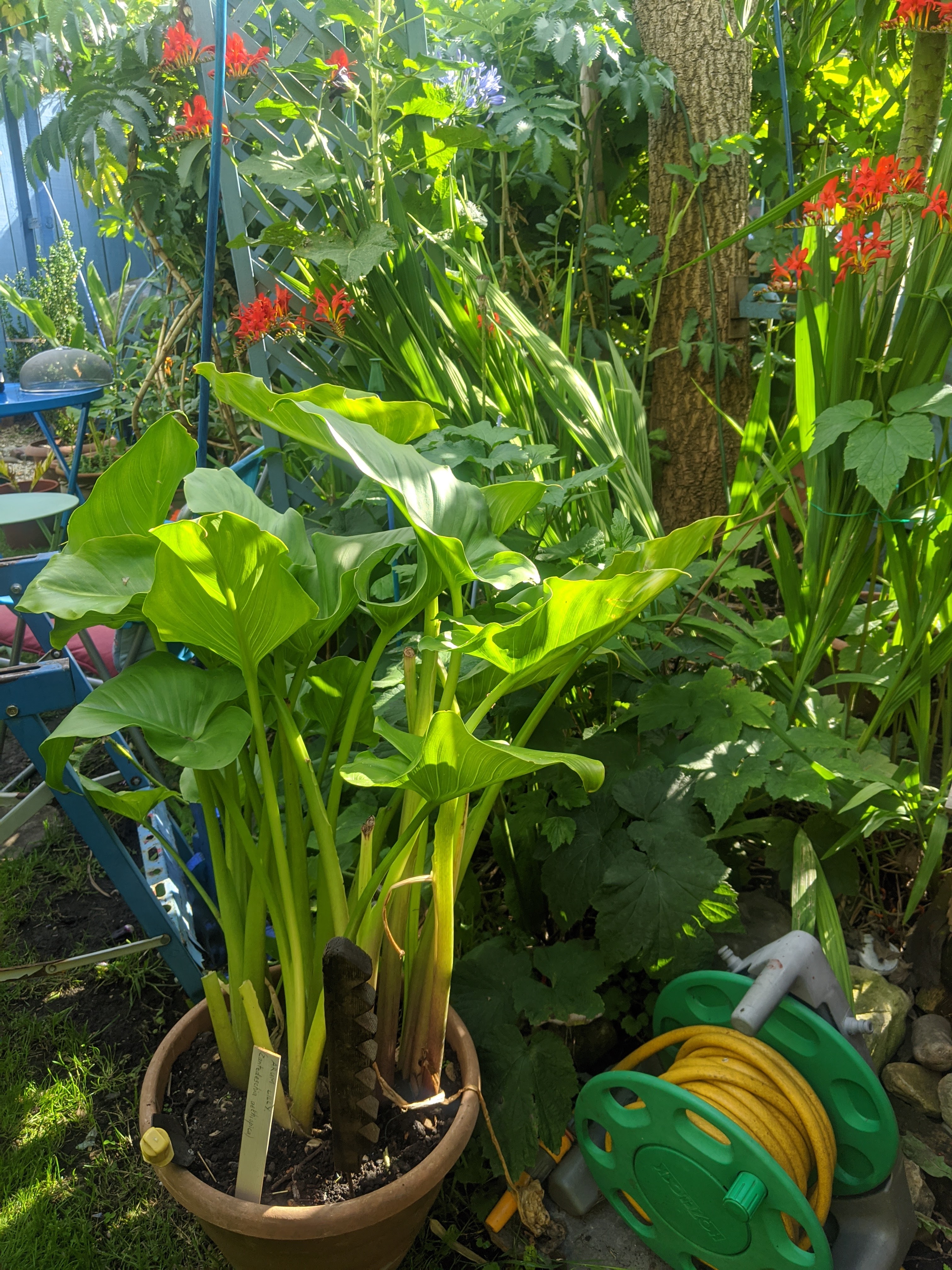
Tony and Glen Eastman have been our friends over many years – well coming on for fifty years, and this is their garden. I’ve wanted to write something about it for some years since a TV company attempted to make a film about it without having the first idea what an artists’ garden might be about. So all they saw was a tall banana tree growing in a city centre garden in Bristol. Hooked by the unexpected novelty, and in spite of Tony’s strenuous efforts to get them off the subject, the resulting film was a disappointment to all of us.
The tiger, by the way is a part of a very large collection of tiger artifacts and drawings brought together over decades. There are also O gauge railway toys and drawings, paintings and sculptures everywhere. They are a great lesson to aspiring artists who expect to be household names before they’re thirty (and consequently hitch a ride on the latest artistic fashion) – in that they’ve survived on small scale commissions and occasional exhibitions. Tony is fascinated by the Japanese culture and they have both travelled there, soaking it all up.

The garden reflects all of these interests . You might think there’s a touch of Henri Rousseau in the exact placing of the tiger. There are glimpses of Eastern art there, places for meditation, shelter from the sun and the rain and it’s all in what most people would think of as a tiny backyard. We were there today and notwithstanding the strenuous efforts of a team of builders working next door to reduce a similar town house to Trump Tower by digging out a huge hole in the ground and painting the breeze block walls with intensely blue paint, you could still sense some peace. Every living thing had been evicted from the building site next door and mercifully some of the invertebrates and birds have moved in. There are a number Echium pininana there, not exactly natives but brought to Cornwall from the Canaries they thrive in the sheltered climate.. In this garden the tallest is seventeen feet and today a procession of ants was ascending and descending as they feasted on the honeydew. Being a member of the borage family it’s hardly surprising that it was alive with bees.

There’s a sense that there’s nothing here by accident. Just as I’ve written about allotments saying something about their allotmenteers, gardens always tell a story about their gardeners – not by shouting but by inviting you to sit and see what comes along. Ask anyone who knows about gardening and they’ll tell you that the sense of the natural and the wild is the most difficult thing to accomplish in any garden – and just to remind you that this is not in the least “natural” there’s a repurposed lavatory pan in one corner. This is not a po faced, self consciously aesthetic garden, but it’s a place of prolonged meditation over many years, even decades.
This was our first trip to Bristol since March 14th so it was lovely to catch up with two of our oldest friends. We met them at a “happening” at Avebury Henge in 1972 when all the art schools in the country were circulated with a date, time and grid reference. How could we resist? There were about twenty people there plus a handful of rather obvious special branch officers who thought we might be up to no good. We all hoped they enjoyed the walk as much as we did. Later as we walked back from Fyfield Down the whole country was plunged into blackout as the electricity was turned off during the three day week brought about by a miners strike. We could see across to the Severn in the gathering darkness and it was one of the most special moments of my life. Life without power stations and coal mines would have its beauties!
So peace, tea, cake, cream and strawberries today and all in a most beautiful garden. Even a sparrow came to join us – a rare sound these days. Here are some more photos.









